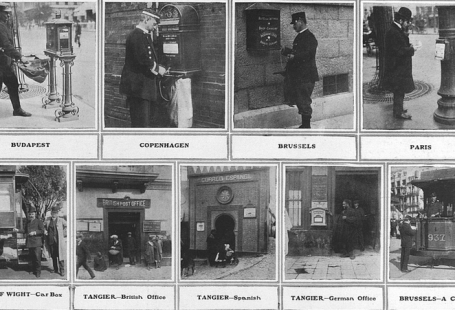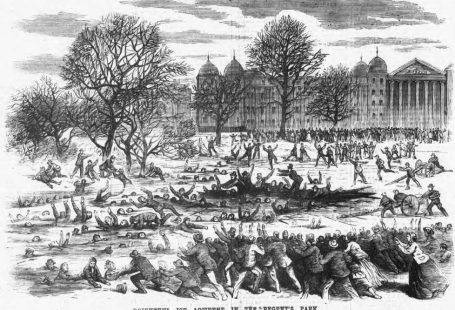Surname alert for family historians across the world!
Two members of the Abertay Historical Society in Scotland are planning a project on the ancestry of Flemish people in Scotland, and are looking for people to share their family history stories with them.
Although the project is looking at Flemish ancestry in Scotland, we suspect the project will be of interest to people all over the world.
So if your surname is included in the list below, you might like to have a read of the article below the list, plus the overview of the project which is given at the end of the article. If you’d like to get in touch with the project organisers, their contact details are included at the end of the article.
List of Scottish surnames with Flemish origins
Fleming (Flemyng, Flemeng and Flandrensis)
Baird
Balliol
Beaton
Brodie
Bruce
Cameron
Campbell
Comyn
Crawford
Douglas
Erskine
Graham
Hamilton
Hay
Innes
Lindsay
Murray
Oliphant
Seton
******************************
The Flemish People in Scotland
Some estimates suggest that up to a third of the current Scottish population may have Flemish ancestors(1). These Flemish immigrants came to Scotland over a 600 year period, between the eleventh and seventeenth centuries. Many shed their continental sounding names to take on the name Fleming or variants such as Flemyng, Flemeng and Flandrensis (a Latin soubriquet describing someone of Flemish descent) (2). Scottish families such as Baird, Balliol, Beaton, Brodie, Bruce, Cameron, Campbell, Comyn, Crawford, Douglas, Erskine, Graham, Hamilton, Hay, Innes, Lindsay, Murray, Oliphant, and Seton are believed to have Flemish ancestors in their bloodline(3).
The Flemish came to Scotland in several waves. The earliest Flemish settlers in Britain came with William the Conqueror’s invading force in 1066(4). The Flemings had the right wing of the battle formation. The Flemish were closely allied with the Normans, not least because William’s wife was the daughter of a Count of Flanders. William richly rewarded the Flemish for their help with land in England.
David Canmore ascended to the Scottish throne in 1124 (as David I) and his wife Maud, of Flemish stock, came north with him accompanied by a large retinue of her Flemish kinsmen(5). This was the first evidence of a Flemish presence in Scotland.
In 1154, English King Henry II expelled many Flemish from England on the grounds that they, as well as other foreigners living in the country at the time, were encroachers on English trade(6). The fact that the Flemings by now had a foothold in Scotland meant that this was an attractive place for those evicted to seek refuge.
The influx of Flemings—many of whom were expert weavers —led to the development of a trading relationship with Flanders(7). The new immigrants worked with the suppliers of wool in Scotland, often the monasteries in the south of the country, to export wool to merchants in Flanders. In the course of time the Scots, realizing that they were losing out on the profits that came with the weaving of their wool, decided to bring Flemish weavers to Scotland. The idea was to bring about a transfer of weaving skills to the indigenous population. In some cases the Flemish weavers and those knowledgeable in flax growing were given significant inducements to come to Scotland. There is evidence of this transfer of skills through to the sixteenth century.
Towards the end of the sixteenth century another wave of Flemish immigration to Scotland took place. The root cause of this was religious persecution. In the wake of the reformation a number of Flemish Protestants left Flanders in the second half of the sixteenth century. This was followed, towards the end of the seventeenth century, by an inflow of Flemish Huguenots fleeing persecution, by King Louis XIV of France, as a result of the Revocation of the Edict of Nantes(8).
The Flemish in Scotland were concentrated, for the most part, in the North and on the East Coast (where there were trading ports with Flanders) (9 and 10). There is evidence of Flemish settlement and activity from the Moray Firth down to Edinburgh and the Borders.
As the Flemish came to Scotland over a relatively long time period they were absorbed into society gradually. As a result it is difficult to gauge their overall impact on Scotland. But there is sufficient evidence of a Flemish presence in historical events and of an impact on the fabric of the Scottish society and economy over time that they likely deserve more credit that they are given in conventional histories of the country.
Overview of Project
John Irvine and Alex Fleming are planning to undertake a ‘bottom up’ study of the Flemish in Scotland drawing on Local History and Genealogical sources. They would be interested to see any resources that members of the Local History Forum could find bearing on Flemish settlements in Scotland and the life and work of these immigrants.
The intention is to involve as many interested local historians in the project as possible so that a comprehensive survey of the Flemish in Scotland can be completed. The hope is that they would be able to draw on local historical resources to discern areas of Flemish settlement and gauge their impact on local economic and social life.
In due course an international conference will be held in St. Andrews to which all local historians contributing to the project will be invited. Articles for the Local History Forum magazine and a book entitled ‘Scotland and the Flemish People’, prepared under the guidance of the Scottish Institute of Historical Research at St. Andrews, will be produced and any research prepared by local historians that is included in these publications will get a full citation.
Any local historian wishing to take part in the project should contact John and Alex via Email at [email protected] and [email protected] respectively.
References
1. B. Platts. Scottish Hazard: The Flemish Nobility and their Impact on Scotland. (Procter Press. 1985) (Cover introduction)
2. F. L. Fleming. A Genealogical History of the Barons Slane. (Paragon. 2008) pp. 5- 6.
3. Platts, op cit (ref 1), Appendix 3, pp. 127 – 177.
4. Platts, op cit (ref 1), Chapter 1.
5. Platts, op cit (ref 1), Chapters 5 & 7.
6. B. Platts. Origins of Heraldry. (Proctor Press. 1980). p 91.
7. A. Fleming. Flemish influence in Britain. Vol 1. (Jackson, Wylie. 1930). Chapter IV.
8. A. Fleming. Hugueonot Influence in Scotland. (Maclellan. 1953). pp 34, 85, 97 and 146.
9. A. Fleming, op cit (ref 5), Chapters XI and XII.
10. G.G. Simpson. Scotland and the Low Countries 1124 – 1994. (Tuckwell Press. 1996). Chapter 1.




